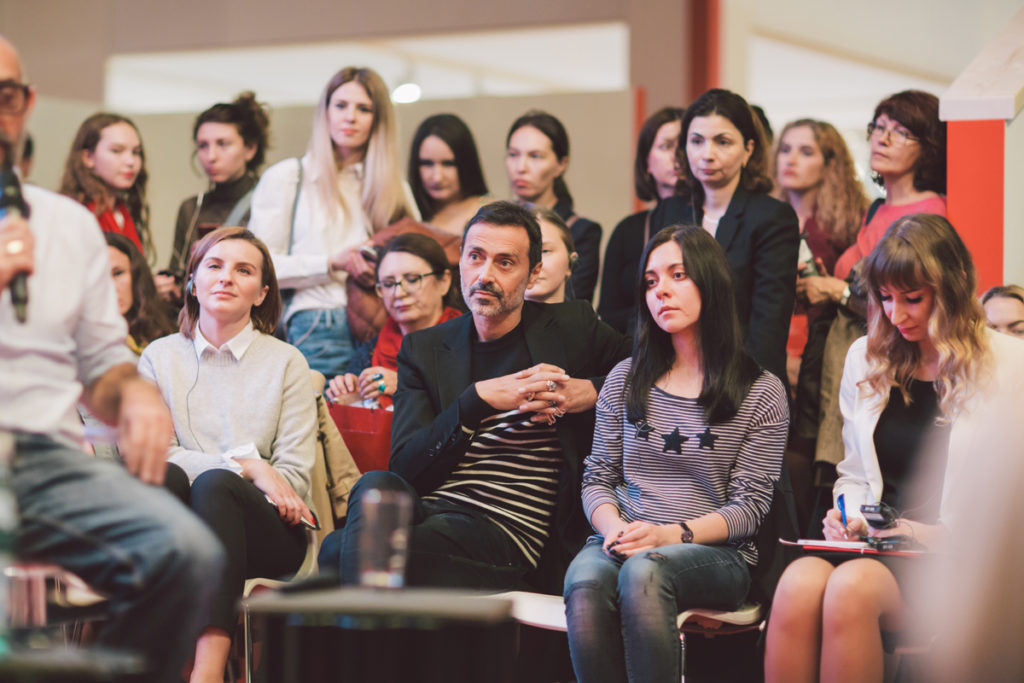The prospects have been looking good since April, when the Salone di Milano attracted almost 16,000 operators from Russia, a real sign of a concrete interest that originates in an economy enjoying substantial growth and that – as IFDM underlined in a dedicated article – is certainly the consequence of the powerful machine of the FIFA World Cup but that is rooted above all in a series of favourable macroeconomic circumstances.
Entering the Saloni di Mosca this year was a little like finding oneself at the Milan exhibition: especially the colours, the red and the white representing the common thread of the exhibition and firmly recalling the Salon, the Red Lounge that has brought with it the Milan set (obviously in reduced form) and the spectacular arena that staged all the opportunities for official networking of the event and also the Master Classes.


The latter were all sold out: Olga Kosyreva, Ferruccio Laviani and Fabio Novembre struggled to respect the time available to them, so many issues were dealt with and so numerous were the questions from an enthusiastic and – as the speakers themselves said – very expert public.
Moscow (an extensive article on the city on ifdm.design) is a transformed city, more modern, bright and well-lit, where design is increasingly given more space, where people are ready to adopt lifestyles and residential trends that last year seemed inaccessible.
And the Salone di Mosca has responded to this change, following in the positive wake created by a driving force triggered by the choices made last year by the organisers and that now can, indeed must, accelerate.
In all this ferment of changing Russian taste, classic furniture is worth a special note, a sector that, while it is true that it has undergone (generally passively) crises and various devaluations, has remained the sector still responsible for the richest creations but that – unfortunately – can almost never be exhibited because they are cloaked in strict privacy.
Certainly, as the most expert operators of the Classic sector said, the cake to be cut up is smaller but the companies competing for a slice are increasingly fewer. Indeed, some of them, even in a tighter market, are considerably increasing their turnovers.
Identity, strategy and product value: these are the three weapons that the classic furniture sector must never forget in constructing (or reconstructing) a market that still wants to invest in the beauty of stylish furniture.
And, as regards beauty, this is what Fabio Novembre told IFDM: “Russia, and Moscow in particular, is a country where beauty rules supreme and Italy, which has been and is the alchemist of beauty, fits perfectly in this context. A perfect match, absolute complementarity. Long live Russia, Long Live Italy”.
The next stopover for the Saloni is Shanghai, from Russia to China, which today seems like the Russia everyone wanted 12 years ago. May we learn from experience.







